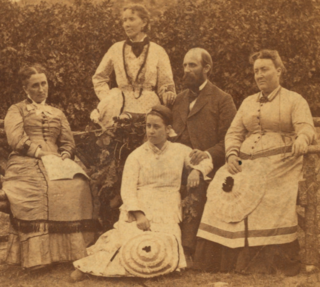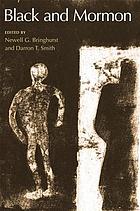| Formation | June 8, 1971 |
|---|---|
| Founders | Thomas Monson, Gordon B. Hinckley, Boyd K. Packer, Ruffin Bridgeforth, Eugene Orr, Darius Gray |
| Founded at | Salt Lake City, Utah |
| Leader | Davis Stovall |
Parent organization | The Church of Jesus Christ of Latter-day Saints |
The Genesis Group is an auxiliary organization of the Church of Jesus Christ of Latter-day Saints (LDS church) for African-American members and their families.
LDS Church leaders Thomas Monson, Gordon B. Hinckley, and Boyd K. Packer established the Genesis Group with Ruffin Bridgeforth, Eugene Orr, and Darius Gray on June 8, 1971 in Salt Lake City, Utah. [1] It was first organized to provide members an organization where they could affiliate with fellow African-American members.
The Genesis group provided meetings for Black members of the LDS church; specifically, Relief Society, Primary, Young Men, Young Women and testimony meetings. Members of Genesis were still expected to attend Sunday meetings in their home wards, [2] which at the time were sacrament meeting, Priesthood meetings, and Sunday School. [3] It was like a branch, a small group of members, but without priesthood authority. The group was led by Ruffin Bridgeforth from 1971 through 1978. [2] Shortly after the church's June 8, 1978, announcement of the revelation extending the priesthood to all worthy male members of the church, the group's attendance dropped, and officially discontinued in 1987. Participation decreased in part because it added additional time commitments to already demanding LDS church membership. In 1985, Marva Collins started a "Genesis II" group in Oakland, California and published a newsletter focused on news about Black Mormons until 1988. [2]
The Genesis Group was reorganized in 1996, based on a perception that African Americans still had unique issues and could benefit from a chance to affiliate with one another. Leaders of the group include Darius Gray (1997–2003), Don Harwell (2003–2018), and Davis Stovall (2018-present). [4] [5] Stake and High Councilmen were assigned to represent The Genesis Group in local organization, and a General authority was assigned to be a liaison to the group. [6]
Other Genesis groups have existed in Washington, D.C. [2] In 2007, similar support groups existed in Hattiesburg, Mississippi, Cincinnati and Columbus, Ohio, Los Angeles, and Houston. [4] The Genesis Group meets on the first Sunday of every month in Salt Lake City. [7]

The Church of Jesus Christ of Latter-day Saints, informally known as the LDS Church or Mormon Church, is a restorationist, nontrinitarian Christian denomination that is the largest denomination in the Latter Day Saint movement. The church is headquartered in the United States in Salt Lake City, Utah and has established congregations and built temples worldwide. According to the church, it has over 17 million members and over 99 thousand volunteer missionaries. As of 2012, the church was the fourth-largest Christian denomination in the U.S. As of 2023, the church reported over 6.8 million U.S. members.

Mormons are a religious and cultural group related to Mormonism, the principal branch of the Latter Day Saint movement started by Joseph Smith in upstate New York during the 1820s. After Smith's death in 1844, the movement split into several groups following different leaders; the majority followed Brigham Young, while smaller groups followed Joseph Smith III, Sidney Rigdon, and James Strang. Most of these smaller groups eventually merged into the Community of Christ, and the term Mormon typically refers to members of the Church of Jesus Christ of Latter-day Saints, as today, this branch is far larger than all the others combined. People who identify as Mormons may also be independently religious, secular, and non-practicing or belong to other denominations. Since 2018, the LDS Church has emphasized a desire for its members be referred to as "members of The Church of Jesus Christ of Latter-day Saints", or more simply as "Latter-day Saints".

Elijah Abel, or Able or Ables was one of the earliest African-American members of the Church of Jesus Christ of Latter-day Saints, and was the church's first African-American elder and Seventy. Abel was predominantly of Scottish and English descent and appears to have been the first, and one of the few, black members in the early history of the church to have received Priesthood ordination, later becoming the faith's first black missionary. Abel did not have his ordination revoked when the LDS Church officially announced its now-obsolete restrictions on Priesthood ordination, but was denied a chance to receive his temple endowment by third church president John Taylor. As a skilled carpenter, Abel often committed his services to the building of LDS temples and chapels. He died in 1884 after serving a mission to Cincinnati, Ohio, his last of three total missions for the church.
During the history of the Latter Day Saint movement, the relationship between Black people and Mormonism has included enslavement, exclusion and inclusion, and official and unofficial discrimination. Black people have been involved with the Latter Day Saint movement since its inception in the 1830s. Their experiences have varied widely, depending on the denomination within Mormonism and the time of their involvement. From the mid-1800s to 1978, Mormonism's largest denomination – the Church of Jesus Christ of Latter-day Saints – barred Black women and men from participating in the ordinances of its temples necessary for the highest level of salvation, prevented most men of Black African descent from being ordained into the church's lay, all-male priesthood, supported racial segregation in its communities and schools, taught that righteous Black people would be made white after death, and opposed interracial marriage. The temple and priesthood racial restrictions were lifted by church leaders in 1978. In 2013, the church disavowed its previous teachings on race for the first time.
Various spectrums of beliefs or practice within Mormonism account for categories of Mormons possessing faith or skepticism regarding various doctrines of The Church of Jesus Christ of Latter-day Saints, or pertaining to issues of orthopraxy/heteropraxy, among those identifying as Mormon. People may also partake of Mormon culture to some degree as a result of having been raised in the LDS Church or else having converted and spent a large portion of their life as an active member of the LDS Church. Such "cultural" Mormons may or may not be actively involved with the church. In some cases they may not even be, or have ever been, official members of the church.

The Apostolic United Brethren (AUB) is a Mormon fundamentalist group that practices polygamy. The AUB has had a temple in Mexico since at least the 1990s, an endowment house in Utah since the early 1980s, and several other locations of worship to accommodate their members in the US states of Wyoming, Arizona, and Montana.
Sexuality has a prominent role within the theology of the Church of Jesus Christ of Latter-day Saints. In its standards for sexual behavior called the law of chastity, top LDS leaders bar all premarital sex, all homosexual sexual activity, the viewing of pornography, masturbation, and overtly sexual kissing, dancing, and touch outside marriage. LDS Leaders teach that gender is defined in premortal life, and that part of the purpose of mortal life is for men and women to be sealed together in heterosexual marriages, progress eternally after death as gods together, and produce spiritual children in the afterlife. The church states that sexual relations within the framework of monogamous opposite-sex marriage are healthy, necessary, and approved by God. The LDS denomination of Mormonism places great emphasis on the sexual behavior of Mormon adherents, as a commitment to follow the law of chastity is required for baptism, adherence is required to receive a temple recommend, and is part of the temple endowment ceremony covenants devout participants promise by oath to keep.

The Church of Jesus Christ of Latter-day Saints releases membership, congregational, and related information on a regular basis. The latest membership information the church releases includes a count of membership, stakes, wards, branches, missions, temples, and family history centers for the worldwide church and for individual countries and territories where the church is recognized. The latest information released was as of December 31, 2022.

Joseph Freeman Jr. is the first man of black African descent to receive the Melchizedek priesthood and be ordained an elder in the Church of Jesus Christ of Latter-day Saints after the announcement of the 1978 Revelation on Priesthood, which allowed "all worthy male members of the Church" to "be ordained to the priesthood without regard for race or color."

The 1978 Revelation on Priesthood was an announcement by leaders of the Church of Jesus Christ of Latter-day Saints that reversed a long-standing policy excluding men of Black African descent from ordination to the denomination's priesthood and both Black men and women from priesthood ordinances in the temple. Leaders stated it was a revelation from God.
Darius Gray is an African-American Latter-day Saint speaker and writer.
Joseph Wafula Sitati has been a general authority of the Church of Jesus Christ of Latter-day Saints since 2009, when he became a member of the First Quorum of the Seventy. He is the church's first black African general authority and the second general authority of black African descent.
From 1852 to 1978, temple and priesthood policies in the Church of Jesus Christ of Latter-day Saints prohibited both Black women and Black men from temple ordinances and ordination in the all-male priesthood. In 1978, the church's highest governing body, the First Presidency, declared in the statement "Official Declaration 2" that the restriction had been lifted. Between 1830 and 1852, a few Black men had been ordained to the Mormon priesthood in the Latter Day Saint movement under Joseph Smith.

Since Mormonism's foundation, Black people have been members, however the church placed restrictions on proselytization efforts among Black people. Before 1978, Black membership was small. It has since grown, and in 1997, there were approximately 500,000 Black members of the church, mostly in Africa, Brazil and the Caribbean. Black membership has continued to grow substantially, especially in West Africa, where two temples have been built. By 2018, an estimated 6% of members were Black worldwide. In the United States, approximately 1% of members are Black.
Ordain Women is a Mormon feminist organization that supports the ordination of women to the priesthood in the Church of Jesus Christ of Latter-day Saints. It was founded on March 17, 2013, by Kate Kelly, a human rights attorney from Washington, D.C., with the website launch containing 19 profiles of individuals calling for the ordination of Mormon women. As of May 17, 2014, the website featured more than 400 profiles.
Mormon feminism is a feminist religious social movement concerned with the role of women within Mormonism. Mormon feminists commonly advocate for a more significant recognition of Heavenly Mother, the ordination of women, gender equality, and social justice grounded in Mormon theology and history. Mormon feminism advocates for more representation and presence of women as well as more leadership roles for women within the hierarchical structure of the church. It also promotes fostering healthy cultural attitudes concerning women and girls.

Black and Mormon is a 2004 book edited, with an introduction, by Newell G. Bringhurst and Darron T. Smith. It is a collection of articles about Black people and Mormonism, race and the LDS priesthood, and the experience of Black Mormons.
This is a bibliography of literature treating the topic of criticism of Mormonism, sorted by alphabetical order of titles.
Mary Lee Pugh Hope was an early African-American member of The Church of Jesus Christ of Latter-Day Saints.